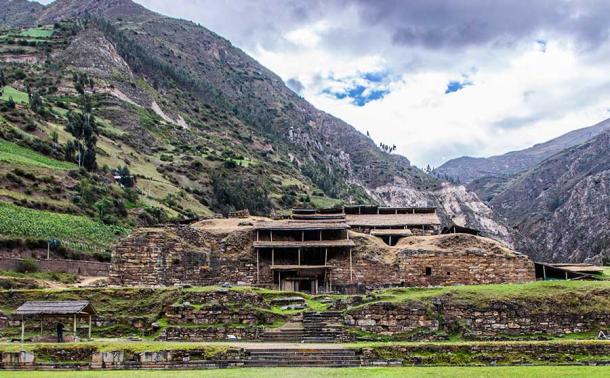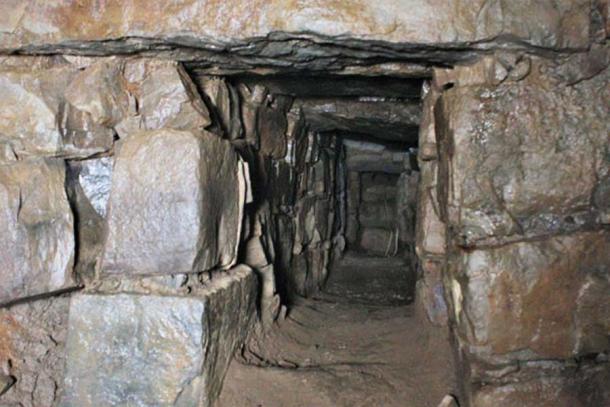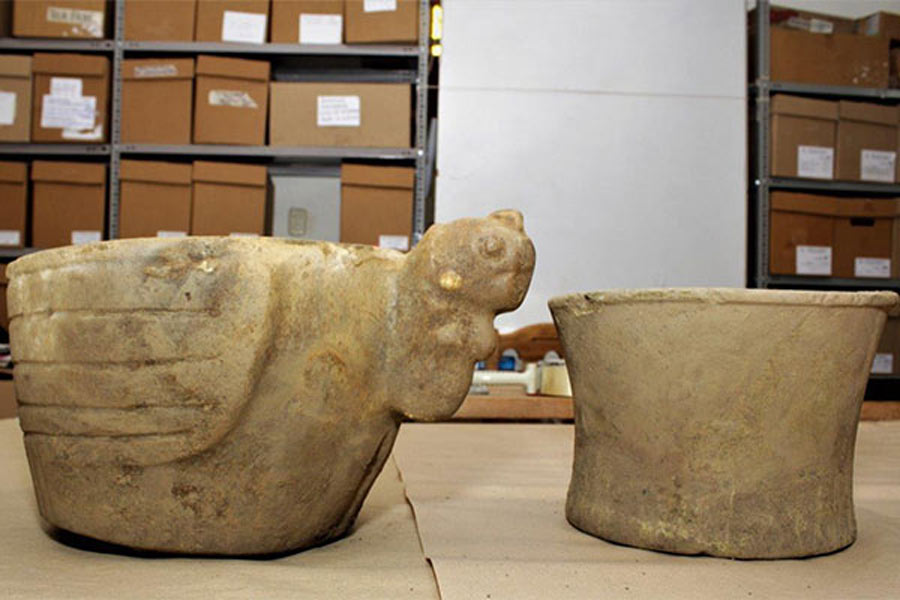Hidden Tunnels Lead to 3,000-Year-Old Condor Gallery At Chauvín de Huántar
When an archaeologist in Peru squeezed into a tunnel at Chauvín de Huántar in Peru, he discovered a hidden 3,000-year-old chamber. At the center of the ancient space he came across a singular artifact which led him to call it the Condor Gallery, or la Galería del Cóndor.

The Chauvín de Huántar archaeological site in Peru. (Apollo / CC BY 2.0)
Exciting Discovery at Chauvín de Huántar
Located in the Ancash Region of Peru some 434 kilometers (270 mi) north of Lima, Chavín de Huántar is a UNESCO World Heritage Site. If you’ve never heard of it, this archaeological site has come into the limelight due to bring a striking religious center that was was occupied as early as 3,000 BC. At 3,180 meters (10,430 ft) above sea level, it was used continually until around 400 to 500 BC, at which time the pre-Inca Chavín culture dominated the region.
- Robotic Archaeologists Discover New Tunnels and “Face Down Bodies” at Chavin de Huantar
- The Cult Centre and Underground World of Chavín de Huántar
A team of researchers from the Chavín de Huántar Archaeological Research and Conservation Program at Stanford University have announced the discovery of a 3,000 year old ceremonial gallery, containing two ritualistic ceramic bowls. The site is believed to represent “the oldest structure known to date at Chavín de Huántar,” announced Antamina, a mining company who financed the explorations.

A Chavin Rover robot archaeologist at work in the Chavín de Huántar temple in Peru. (Andina)
Using Robotics to Support Archaeological Excavation
In 2019 a tiny “robotic archaeologist” equipped with a camera trundled into the unexplored hidden space in one of the main buildings at Chavín. The remote-controlled device delivered exciting pictures of a lost room, dubbed “a gallery,” with an unidentifiable artifact at its center. According to a report in Antinima, archaeologist and project director John Rick crawled through a “40 centimeter diameter tunnel” in May 2022 that led him into the heart of the hidden gallery.
The bold explorer of ancient worlds slowly approached the singular artifact at the center of the room. It was a finely-sculptured ceremonial stone bowl weighing 17 kilograms (37.47 lbs). Measuring 30 centimeters (11.81 inches) in diameter by 25 centimeters (9.84 inches) in height, the recently discovered Condor vessel features the head of an Andean condor on one side and its tail on the opposite. Thus, the sacred vessel has been named “the Condor Pot.” A second simpler stone vessel was also discovered in the so-called Condor Gallery.

The ceremonial gallery discovered at Chavín de Huántar in Peru. (Antamina)
Putting Chavín de Huántar into Context
Archaeologist John Rick has theorized that the two ritual bowls were votive offerings accompanying the death of an important person in the community. The gallery wasn’t ever used for day-to-day uses, and it was “purely ceremonial,” added Rick. The researcher concluded that the vessels were most probably deposited when the stone gallery, “the oldest known to date,” was closed around 3,000 years ago. 1000 BC represents what Professor Rick describes as “a transitional space of time between the late preceramic site of Caral, and the middle and late formative, or Chavín period.”
For those who don’t already know, Caral is a 4,000 to 4,600-year-old city covering 150 hectares (370 acres). This trading metropolis thrived at the same time as people in Egypt were building pyramids. The six stone pyramids of Caral were also constructed in stone by hundreds of skilled artisans. The largest, Piramide Mayor, stands at 18.30 meters (60 ft) high with a base measuring 137 meters (450 ft) by 152.5 meters (500 ft). The later Chavín culture developed in the northern Andean highlands of Peru from 900 BC to 200 BC and they greatly developed Chavín de Huántar. It was just before the emergence of Chavín that the Condor tomb was built.
@Antamina_Peru: Se anuncia hallazgo de una nueva galería ceremonial de 3,000 años de antigüedad en Chavín de Huántar
Link: https://t.co/jk9acyNNqW pic.twitter.com/4RKYZqzxDN
— Revista ProActivo (@proactivoperu) May 28, 2022
Why a Condor, and Not a Cat or a Serpent?
Perhaps the most interesting question here, which has not yet been publicly addressed by Professor Rick, is “why” out of all of the hundreds of forest creatures did the craftsmen feature a condor? Why not, say, a puma or a serpent bowl? Animistic cultures were, in totality, absorbed in the functions of nature. Their world was, in its micro and macro operations, completely dependent on their relationships with the animals around them.
- Did Ancient Priests in Peru Invent Authority?
- Who Was The Lanzon, The Fierce And Terrible God Of The Chavin?
Perhaps the question “why a condor” becomes closer to answerable when we consider the giant bird is the king of all “scavengers.” For thousands of years, forest dwelling indigenous cultures in Peru watched the condor tearing meat from the bones of dead animals, then flying the mortal remains into the sky. The condor’s survival habits, therefore, become a very slick metaphor for the transition of souls from Earth to the heavens and beyond.
Top image: The Condor pot discovered at Chavín de Huántar Source: Antamina
By Ashley Cowie



















